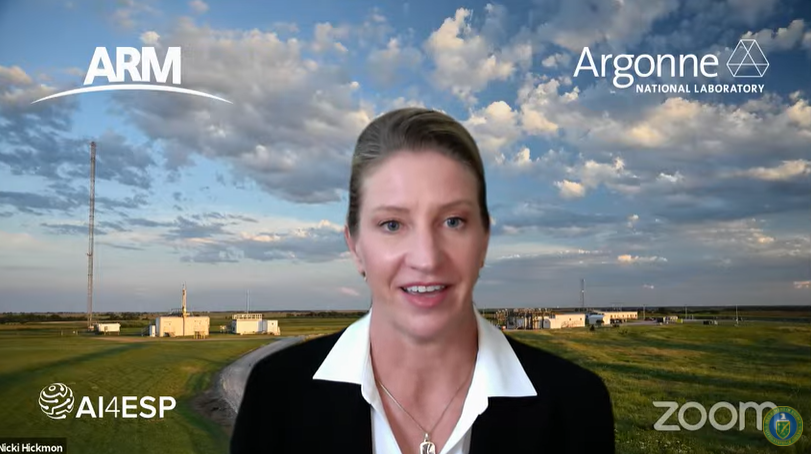ARM’s Hickmon Speaks During DOE Climate Roundtable
Published: 11 August 2021

Nicki Hickmon, the Atmospheric Radiation Measurement (ARM) user facility’s associate director for operations, was a panelist during a July 22 livestreamed roundtable discussion about climate research within the U.S. Department of Energy’s (DOE’s) Office of Science.
Energy Secretary Jennifer Granholm led the discussion, which also included Jane Lubchenco, deputy director for climate and environment at the White House Office of Science and Technology Policy; and scientists Margaret Torn from Lawrence Berkeley National Laboratory in California and Kate Calvin from Pacific Northwest National Laboratory in Washington state.
“As we make our way through yet another summer of droughts and heatwaves and wildfires in the West, the Office of Science’s efforts to study climate change could not be more important,” said Granholm in her introduction. “We play critical roles in both observing current climate-related developments and then predicting where they’re headed.”
Granholm said that ARM “boasts an unparalleled ability to observe interactions between changes in our atmosphere and changes in our climate.”
Hickmon answered a question from Lubchenco asking how ARM helps combine observations, models, and artificial intelligence to more rapidly enhance climate predictions.
ARM oversees fixed-location observatories, the oldest operating for 29 years in the Southern Great Plains, and mobile and aerial facilities that collect atmospheric data around the world.
“For climate prediction, we need to understand processes that are on tiny timescales or decades-long or longer timescales,” said Hickmon, based at Argonne National Laboratory in Illinois. ARM data provide a 3-dimensional picture of the atmosphere over time.
In terms of modeling, Hickmon referred to the Large-Eddy Simulation (LES) ARM Symbiotic Simulation and Observation (LASSO) activity. LASSO produces high-resolution model simulations that users can compare with ARM observations. The LASSO output can also be used for model validation and analysis.
It’s not just atmospheric scientists who are interested in model output, said Hickmon. Stakeholders might use the output to learn more about agricultural use, weather forecasting, or clean energy investments, for example.
“We want all the information we’re putting out there to be as accurate as possible so however they’re using it, they can truly trust what they’re looking at,” she said.
Hickmon also discussed her role on the core leadership team for DOE’s Artificial Intelligence for Earth System Predictability (AI4ESP) initiative. AI4ESP is a multi-laboratory effort exploring how to use AI with observations and models to enhance earth system predictability.
The AI4ESP community plans to build on findings from a newly released NOAA-DOE Precipitation Processes and Predictability workshop report, said Hickmon. The report identifies operational and research needs related to precipitation predictability and physical processes.
Forward-thinking approaches to climate science were top of mind for the other panelists as well.
Torn, a longtime ARM data user who leads research on ecology and the carbon cycle, said that scientific research is needed to better understand threats to the ecosystem and create solutions.
“With the rapid warming and change in extremes,” said Torn, “we can’t simply use the past to predict the future.”
Keep up with the Atmospheric Observer
Updates on ARM news, events, and opportunities delivered to your inbox
ARM User Profile
ARM welcomes users from all institutions and nations. A free ARM user account is needed to access ARM data.


















